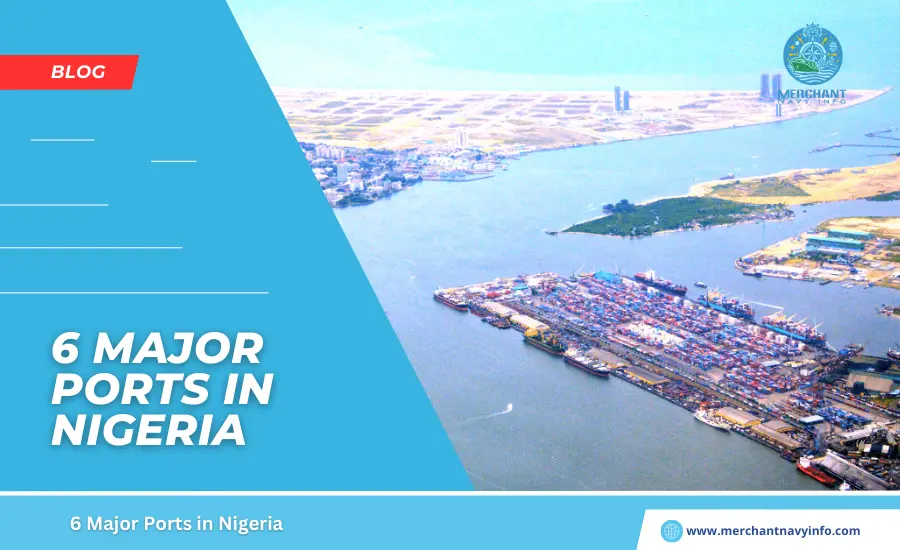
According to the World Bank report, the West African country ports of Nigeria is Africa’s largest economy. Its GDPA IN 2021 was $514 billion. Nigeria has been experiencing positive economic growth for many years due to increasing oil and gas production. It is the world’s eighth-largest oil exporter and is also rich in minerals, experiencing positive economic growth. For many years, this has been due to increasing oil and gas production. It is the world’s eighth-largest oil exporter and is also rich in minerals, also the natural gas, coal, also limestone, gold, tin, and bauxite.
About 30% of the population lives and is employed in rural areas. The agricultural sector produces beans, cassava, nuts, cocoa, corn, rice, sorghum, and rubber, which are among the most important exports. Nigeria has a very highly developed financial sector and also manufacturing industry based on the mass production of leather goods, textiles, automobiles, plastics and canned goods. Nigeria has a coastline of 853 kilometers on the Atlantic Ocean and has the country’s six largest ports involved in maritime trade with Brazil, China, India, Japan, also the United States and European Union countries.
Six Major Ports of Nigeria
1. Lagos Port
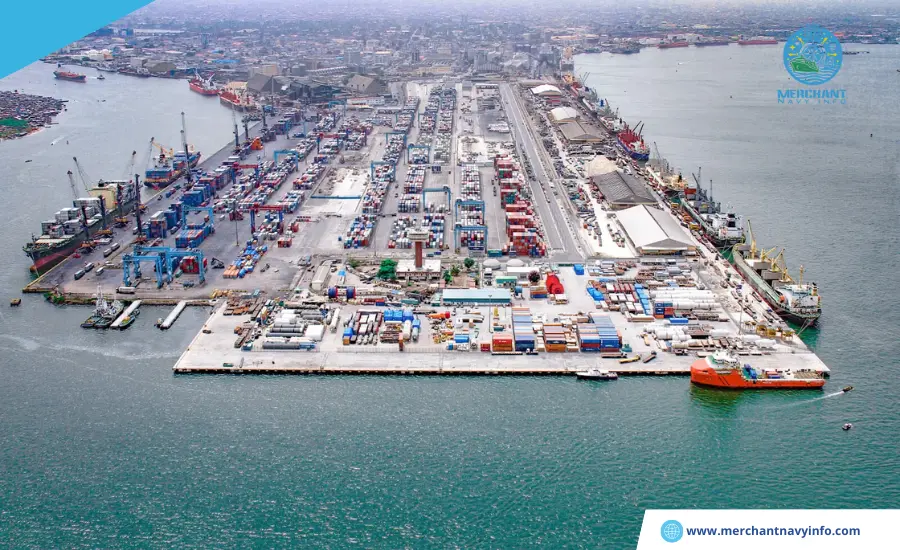
This ports of Nigeria is located near the Bight of Benin in Apapa, an area of Lagos State, which is the main commercial centre of Nigeria. Also known as Premier Port or Apapa Port. It is the country’s oldest and largest port in terms of both land area and cargo volume handled. More than half of Nigeria’s maritime trade passes through Apapa Wharf, which also serves as a transshipment point to landlocked countries such as Chad and Niger. Lagos’ port facilities are visited annually by about 1,000 ships carrying 5,700,000 tonnes of cargo. The ports of Nigeria was established in 1913 and also began operations in 1921 with the construction of four deepwater wharves. It is currently one of the most efficient ports in Nigeria, with modern equipment and state-of-the-art operating systems to provide cost-effective services to both domestic and international customers.
Port Features
The ports of Nigeria has an area of over 80 hectares and is equipped with 8-metre quad gates to accommodate oversized cargo, making it superior to other ports in Nigeria. It has two logistics hubs, Eko Support Services Ltd and Lagos Deep Offshore Logistics, which have a bonded warehouse and terminal building. The Lagos port complex has five private terminals operated by AP Moller, ENL Consortium Limited, the Apapa Bulk Terminal, Greenview Development Nigeria Ltd, and also Lilypond Inland. Terminal These specialized facilities have over ten berths for handling grains, machinery, construction materials and perishables such as food, minerals, fertilizers, flour, salt and sugar.
Container Terminal
The port’s container terminal has an area of 55 hectares and a total quay length of 1005 meters. It has a container transport capacity of more than 1,000,000 TEU per year and 298 refrigerated container ports. Equipment such as 13 mobile harbour cranes and 14 rubber-tired cranes are used for loading and also unloading operations. The storage area consists of three warehouses with an area of 3025 square meters and an unpaved open yard for temporary storage of goods.
2. Tin Can Island Port
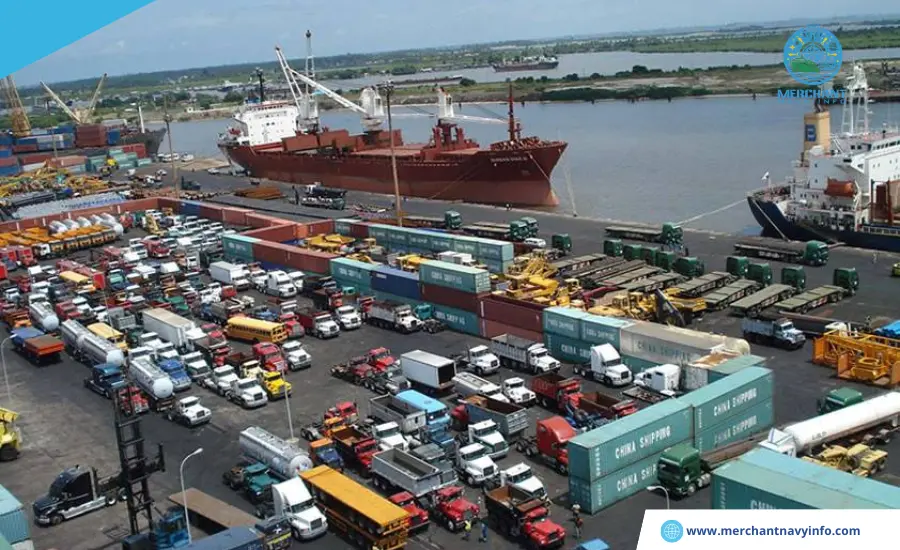
Tin Can Island, port of Nigeria is located west of Apapa, also near the Lagos Port Complex. It is the second largest port in Nigeria and was established in 1975 when economic activity, especially international trade, diversified. This was the result of Nigeria’s oil boom after the civil war ended and reconstruction began. Increased import and export trade caused congestion at Lagos Port, so another facility was built on Tin Can Island to divert surplus cargo. The port’s operations began in 1976 after the construction of three main wharves In 1977. It could accommodate nine ships at the same time, covering an area of about 70 hectares. Today, Tin Can Island Harbour covers a land area of 79 hectares and provides bunkering and ship repair services for vessels weighing up to 35,000 DWT. Fresh water is available at all berths through underground wells drilled to a depth of 250 meters.
Port Specifications
Tin Can Island Port handles various types of cargo, including liquid bulk, dry cargo, and containerized cargo. RoRo and general cargo in its 12 berths with a length of 1358 meters and a side depth of 7 meters 11 meters. It can accommodate vessels up to 260 meters in length Kirikiri Riverge. The terminal has two berths with a length of 700 meters and a water depth of 45 meters. It also provides 24/7 pilotage services and fast turnaround for vessels. Security of the ports of Nigeria is ensured through regular patrols of the berths, oil jetties and buoys by the Maritime Police as well as the Nigerian Navy.
Container Terminal
The facility was handed over to the Bolloré Port Consortium and the China Partnership Consortium, which is made up of China. Merchants Holdings International and the China-Africa Development. Fund Significant infrastructure measures have been implemented in the terminal, which employs around 700 people. It is also directly connected to major highways and industrial centers. The terminal covers 60 hectares, and it also has a 25-hectare container depot. The overall mooring length is 770 meters, and the depth is 13 meters. The annual storage capacity is around 20,000 TEU. The ports of Nigeria is designed to handle 650,000 TEU per year. Fully functional port facilities facilitate port operations.
3. Calabar Port
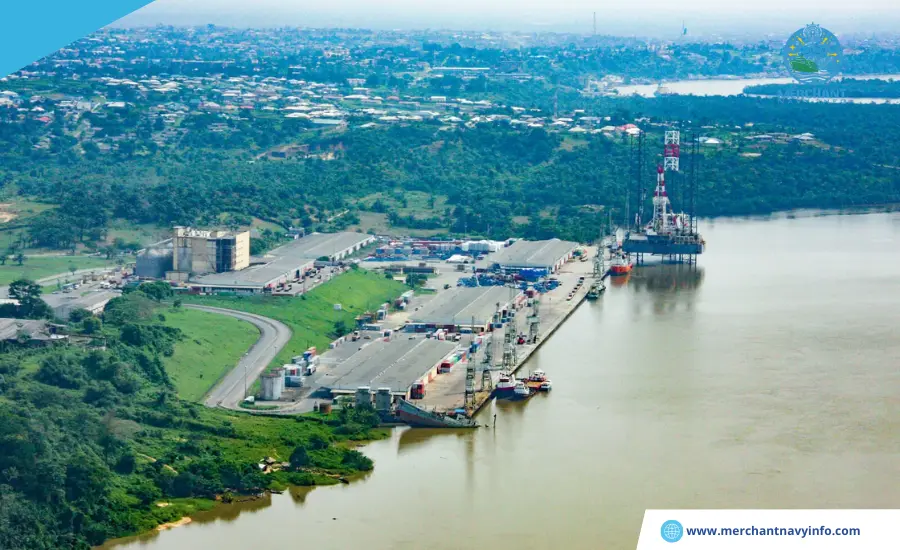
The new Calabar Port was clearly commissioned in 1979 and is located 45 nautical miles upstream from the fairway buoy. It is a multipurpose port managed by the Nigerian Ports Authority. It consists of three terminals operated by ECM Terminals Ltd, INTELS Nigeria Ltd and Shoreline Logistics Nigeria Limited. Regular dredging is required to maintain a draft of 75 m. The port has handled about 240,000 tonnes of general cargo, 10,000 TEUs and 96 million tonnes of crude oil annually Since colonial times. The Port of Calabar has served the northern states of Nigeria, handling containers, general cargo, cement sacks, grains and seafood.
The old port has two 450 meter long conventional berths for general cargo ships. There are also shipyards and four crude oil terminals at Annan, Odudu, Yoho and Quarbo. It has 90,000 square meters of storage space and over 20 cooling stations. Bagged goods are stored in a 28,000 square meter storage area and containers in a 36,000 square meter storage area. The port is home to factories and the Lafarge Cement plant.
4. Onne Harbour
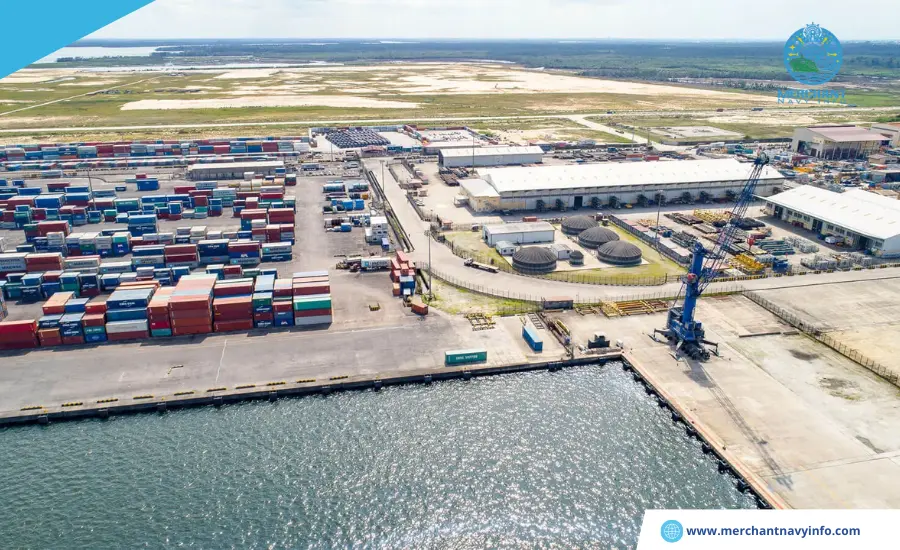
One Harbour is located on the Bonny River along Ogg Creek. It was established as a free port zone to supply West Africa’s oil and gas industry. The renovated port can accommodate the latest generation of ocean-going vessels and consists of the Federal Ocean Terminal and the Federal Lighter Terminal. The former has four quays, and the latter has 11 berths. These specialized terminals handle bulk cargo, containers, raw materials, steel, fertilizer, coal and finished products. The port can accommodate vessels of 90,000 DWT and handled a cargo volume of 27,580,642 million tonnes in 2017. There are three terminals operated by private companies.
The Brawal terminal has a linear quay 370 m long and 95 m deep to accommodate container ships and conventional cargo ships. A paved area of 9400 m2 is used as an oil supply base/ The terminal has a storage space of 600 m2. The INTELS terminal is the known biggest oil and also gas free zone in Africa. The deepwater facility has a average 15 m channel draft and a 160,680 m2 warehouse area for the keeping of containers and break bulk.
5. Port of Harcourt
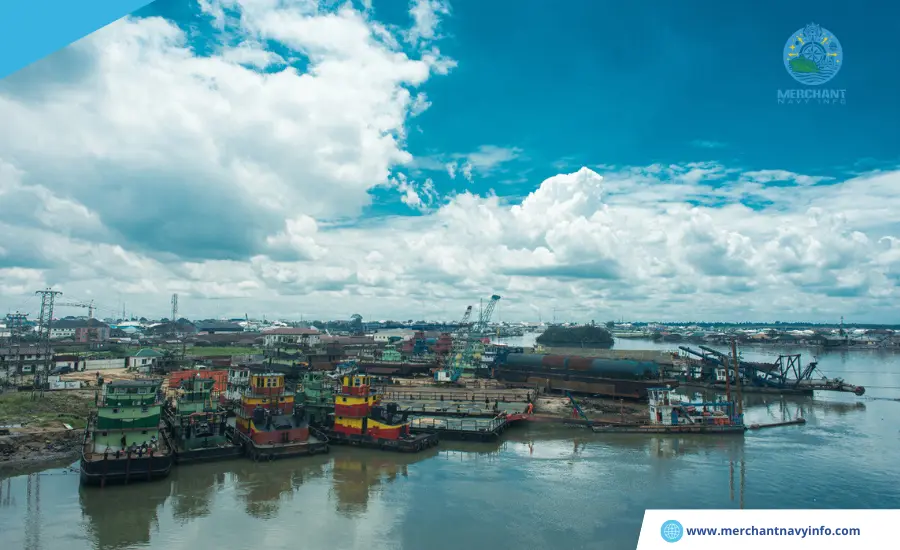
Harcourt Port is located on the Gulf of Guinea and is also known as the Eastern Nigerian River Port Complex. The port entrance needs to be dredged periodically to ensure a constant water depth. Harcourt is an important transshipment point between Niger and Chad It is also a rail hub and Nigeria’s main coal export port, handling 810,000 tonnes of cargo per year. The port has a berth line of 1300 m long that can accommodate eight ocean-going ships simultaneously. It has 16 tanks with a capacity of 3050 tonnes for storing oil and petroleum products. Seven storage areas with an area of 12,400 square meters and four. Archon warehouses with a storage capacity of 10,500 square meters are part of the main storage terminal.
There is also a shipyard where electrical, marine and engineering works are carried out. This multipurpose facility acts as a mother port for numerous piers located near the port area. It is strategically located in one of the world’s largest crude oil-producing regions. The container terminal only serves container ships, not general cargo ships. It has 100 refrigerated container connections and four warehouses. BUA terminal handles frozen fish, packaged rice, cement, project cargo and steel pipes on seven quays.
6. Warri Port
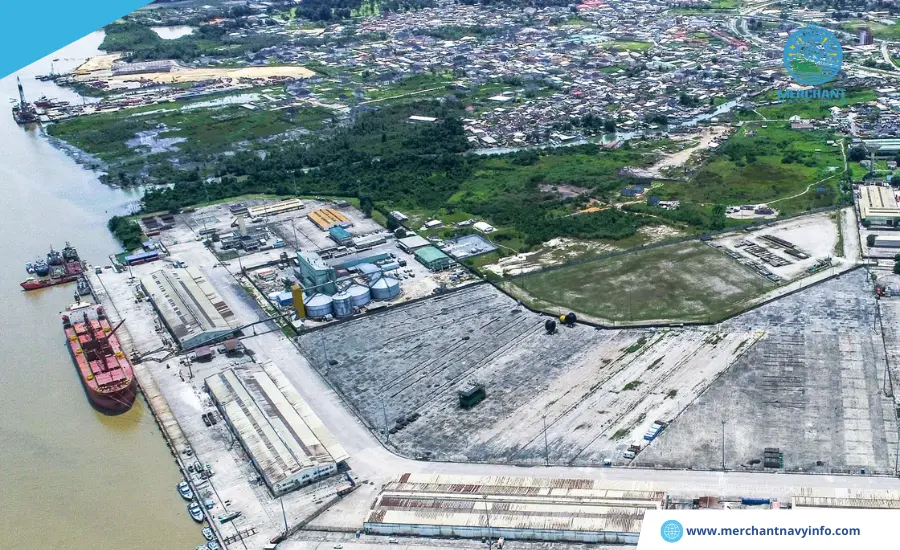
Warri Port was built in the late 1980s to serve the Western Delta region and attract oil companies. It is strategically located between Lagos and Onne Port and was declared a Free Trade Zone in 2011. The ports of Nigeria has an area of 1,530,000 square meters and is divided into the new port of Warri and also the old port, which handles RoRo, containers and general cargo. It has four container quays and five general cargo berths with an area of 1600 meters and a draft of 8 meters. A 60,000 square meter yard is used for container storage, and also 2,500 square meter paved area is used for bulk goods storage. The facility is equipped with state-of-the-art facilities, including five cranes, nine forklifts, three trailers, and eight-port trucks. An industrial area is adjacent to the port, housing factories, processing plants and shipping company offices.









